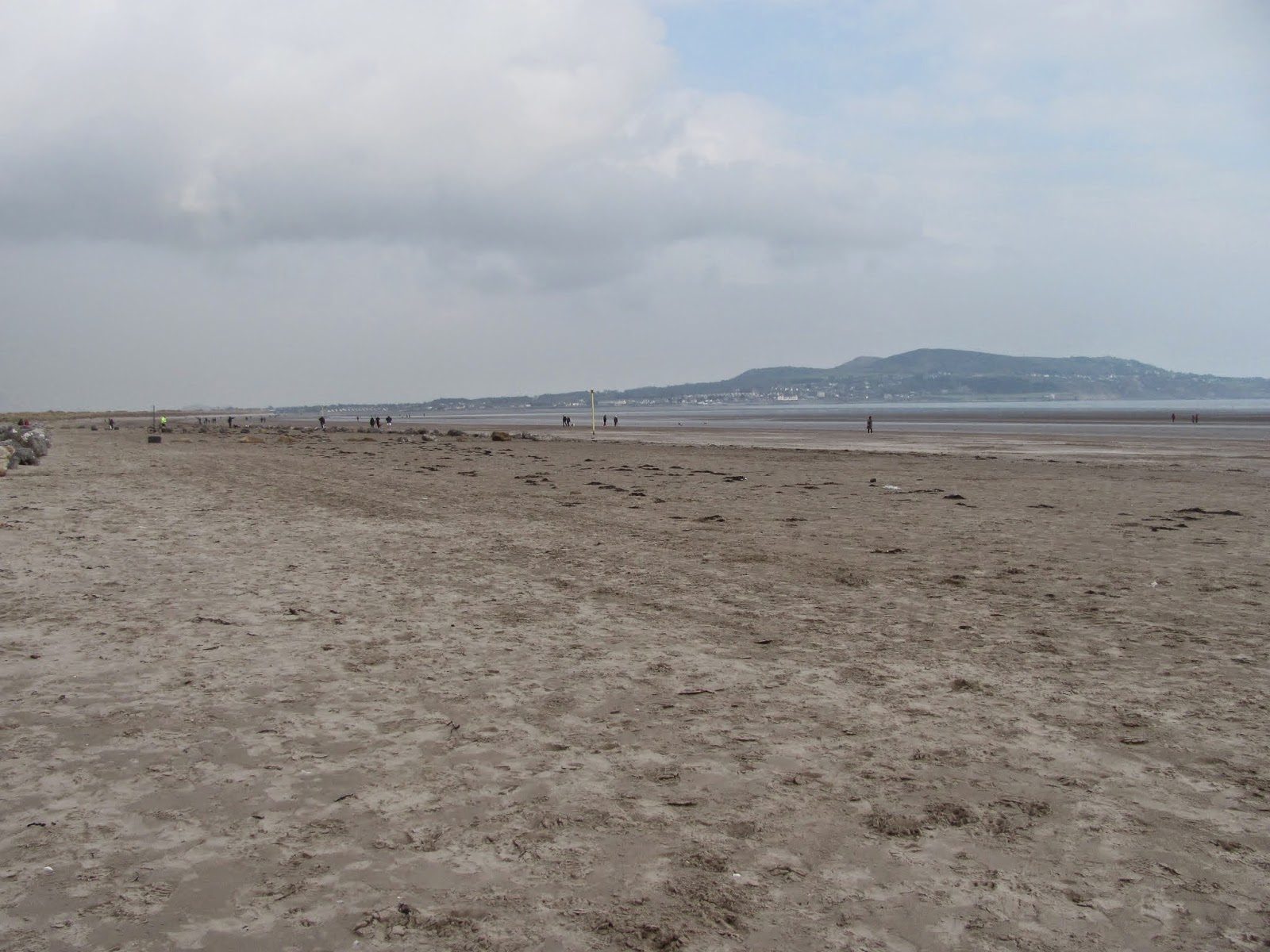Thanks to the great organizing efforts of Sara's co-worker, we recently enjoyed a beautiful weekend hiking and exploring Carlingford, seemingly the center of Irish pre-wedding celebrations.
We took the train (my first time on Irish rail, pretty swanky compared to the bus) straight north from Dublin to Dundalk, and from there took a taxi to Carlingford, a small village on the Cooley Peninsula, just across a small sea inlet from the Mountains of Morne in Co. Down, Northern Ireland.
From the B&B, we could see the peak of Tain (pronounced, TAWN), the mini-mountain we'd be climbing. Luckily, the peak was clear, so we could safely climb all the way to the summit for the best views of both the Republic and the North.
 |
| Tain Mountain with Famine Village |
On the mountainside, we passed the ruins of a famine village, one of the many small settlements completely abandoned in the mid-nineteenth century as poverty and starvation swept the country. Today, all that remains are limestone walls and building foundations.
 |
| Famine Village Home |
We reached the shoulder of the hills, crossing Maeve's Gap, a cutaway between two small peaks that legend says was carved by the soldiers Queen Maeve so she could ride her chariot over the hill to capture a prize bull from a competing clan. Hey, legends are legends.
 |
| Maeve's Gap |
From the windy summit of 590 meters (1900 feet), we got great views of the surrounding countryside of the Cooley Peninsula, Co. Louth, and beyond.
 |
| Carlingford Mountain Summit Inland View |
 |
| Carlingford and Carlingford Lough from Carlingford Mountain Summit |
After the windy descent, we hit the town for dinner and a well-deserved drink. It was then that we (non-Irish) discovered Carlingford's legendary party reputation. While the international (mostly English) stag and hen parties are raging in Dublin's Temple Bar, the Irish soon-to-be-weds take to this tiny burg to drink and dance the night away with other Irish revelers. We met parties from all over the country, and we simply had to ask our Irish companions, "Why here? Of all the small villages in the country?"
"Well, it's just self-perpetuating... Carlingford is the place to have your stag... because it's the place to have your stag!"
It made sense enough.
The next morning, we walked around the village itself, visiting King John's Castle—the King John of Robin Hood fame—on the cute harbor of the village. From there, we set off on a shorter walk along the town's new greenway, a beautiful and comfortable trail following the coast along Carlingford Lough.
 |
| King John's Castle Carlingford |
 |
| An Oddly-Angled Rainbow |
Carlingford, as it happened, was celebrating its annual leprechaun hunt for the local kids. The town claims to have one of the last remaining indigenous leprechaun communities—and has even successfully had the local population given protected status by the European Union. We didn't participate in the search this year, still recovering from the previous day's hike as we were, but I got a picture with the shillelagh-wielding mascot of the hunt in the town center.
 |
| Cory and the Elder Leprechaun |
Legs stiff and bodies rewardingly exhausted, we left the hills and the leprechauns behind to rejoin the real world. Now we know the place to go for a good hike... or a good small-town stag party!



































